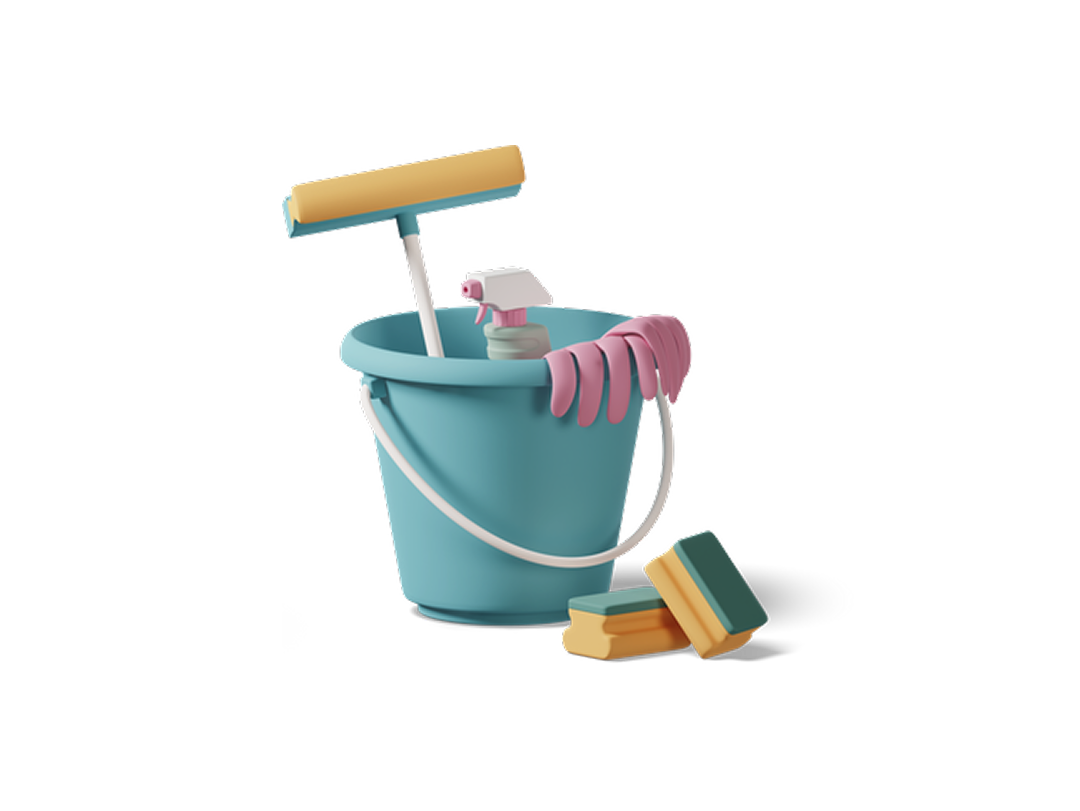ipaster was an online platform that allowed people to book professionally trained cleaners for their homes, a venture I co-founded and successfully exited in 2019.
In the summer of 2013, my friend Larklind and I were eager to dive into the world of business. With limited capital but a strong entrepreneurial drive, we searched for opportunities that aligned with our skills and networks. Given that both of us had family members working in facility services, we thought, “Why not start a cleaning company?” And so, CM Reinigungen (CM Cleaning) was born.
At first, we embraced a broad approach, offering everything from construction cleaning to maintenance and conservatory cleaning in the B2B sector. Our mindset was simple: the more services we provided, the more opportunities we could capture. However, we quickly realized that trying to be a jack of all trades in a highly competitive market, was challenging. The operational complexity and inefficiencies were costing us more than we anticipated, and we soon understood that in a crowded market, specialization was the key to growth.
We decided to narrow our focus to a few core services, ensuring we could deliver exceptional and diffrentiated quality rather than a mediocre and average experience across the board. This strategic pivot became our first real-world lesson in product strategy and user experience—learning to understand the market, identify pain points, and iterate to create superior service.
But our vision didn’t stop at refining our service offerings. We were also committed to differentiating ourselves from the competition through innovation and quality, setting the stage for the evolution from CM Reinigungen to ipaster.
Starting with the human
To identify opportunities for differentiation, I analyzed our customer base to uncover any unmet needs. After several discussions and heartfelt feedback, I identified three potential customer segments:
Martha Keller - Homeowner with Specialized Surfaces
I need professionals who understand how to clean without damaging. I can’t afford scratches on my marble floors or streaks on my panoramic windows.
Demographics
- Age: 52
- Occupation: Business Consultant
- Location: Sankt Gallen, Switzerland
- Family: Married, two children
- Living Situation: Owns a large villa with glass facades and natural stone flooring
Goals
- Preserve the value of her home through proper maintenance
- Find reliable experts for specialized cleaning (e.g., glass facades, marble floors, or high-end woodwork)
- Ensure that cleaning is done without causing damage to sensitive surfaces
Frustrations
- Difficulty finding cleaning professionals who truly understand how to care for premium materials
- Inconsistent service quality among providers
- Cleaning products or techniques that may harm her valuable surfaces
Reto Meier - Homeowner in a Construction or Renovation Project
I just finished my dream renovation. Now I need a service that can make it truly feel like home without leftover dust everywhere.
Demographics
- Age: 38
- Occupation: Architect
- Location: Balzers, Liechtenstein
- Family: Lives with her partner, just finished a full house renovation
- Living Situation: Recently renovated a mid-century home
Goals
- Ensure his newly renovated home is spotless and move-in ready
- Quickly eliminate construction dust and debris without extra effort
- Find a service that understands the challenges of post-construction cleaning
Frustrations
- Standard cleaning services don’t remove fine dust and leftover debris effectively
- Delays in cleaning services prevents settling into the renovated home
- Some providers don’t use the right equipment for post-construction cleaning
Anna Fischer – Quality-Conscious Working Woman
I want to come home to a clean and fresh space without having to worry if it was done properly. I don’t have time to micromanage cleaners.
Demographics
- Age: 42
- Occupation: Marketing Executive
- Location: Buchs SG, Switzerland
- Family: Married, two kids (ages 7 and 10)
- Living Situation: Apartment in a high-end residential building
Goals
- Keep her home in pristine condition without compromising her busy schedule
- Find a cleaning service that is trustworthy, efficient, and detail-oriented
- Ensure her children live in a clean, hygienic environment
Frustrations
- Lack of consistency in cleaning quality from different providers
- Having to supervise or re-clean after professionals who don’t meet her standards
- Finding a reliable provider who respects her home and privacy
Finding the Right Target
Once I had identified three potential customer segments, the next step was to determine which one to prioritize. To do this, I focused on identifying the "sweet spot"—the intersection of three to four key factors that indicate whether a persona is both a good fit and likely to engage with our solution.
My decision-making framework included the following criteria:
Intensity of the Pain
- How severe is the problem for the potential customer?
- The stronger the pain point, the higher the likelihood that they will actively seek and consider a solution.
- A deep and urgent problem makes users more motivated to explore and adopt our offering.
Ability to Fix
- Does the target persona have the authority and financial means to purchase the solution?
- If the end user lacks buying power (e.g., a child), we must target the decision-makers (e.g., parents), which makes adoption more challenging.
- The ideal persona should have direct control over the purchasing decision.
Frequency of the Pain
- How often does the persona experience the problem?
- The more frequent the pain, the faster we can gather feedback, iterate, and refine the solution.
- Additionally, a recurring issue increases the user’s urgency to find a fix.
Effort to Solve
- How complex or resource-intensive is it for our company to address this pain point?
- A high-effort solution requires more budget, human resources, and training, increasing risk.
- The ideal target lies at the balance between high impact for the customer and manageable effort for us.
Based on these criteria, Anna Fischer, the Quality-Conscious Working Woman, emerged as the ideal target persona:
- High Frequency of Need. She requires weekly professional cleaning to maintain her home.
- Strong Pain Point. Balancing work, family, and household chores is challenging, making cleaning a persistent problem for her.
- Financial Ability. As a high-earning professional, she has the budget to invest in a reliable cleaning service.
- Low Effort for Implementation. Our company already had the necessary resources and infrastructure in place, making it easy to serve her without bigger costs or operational strain.
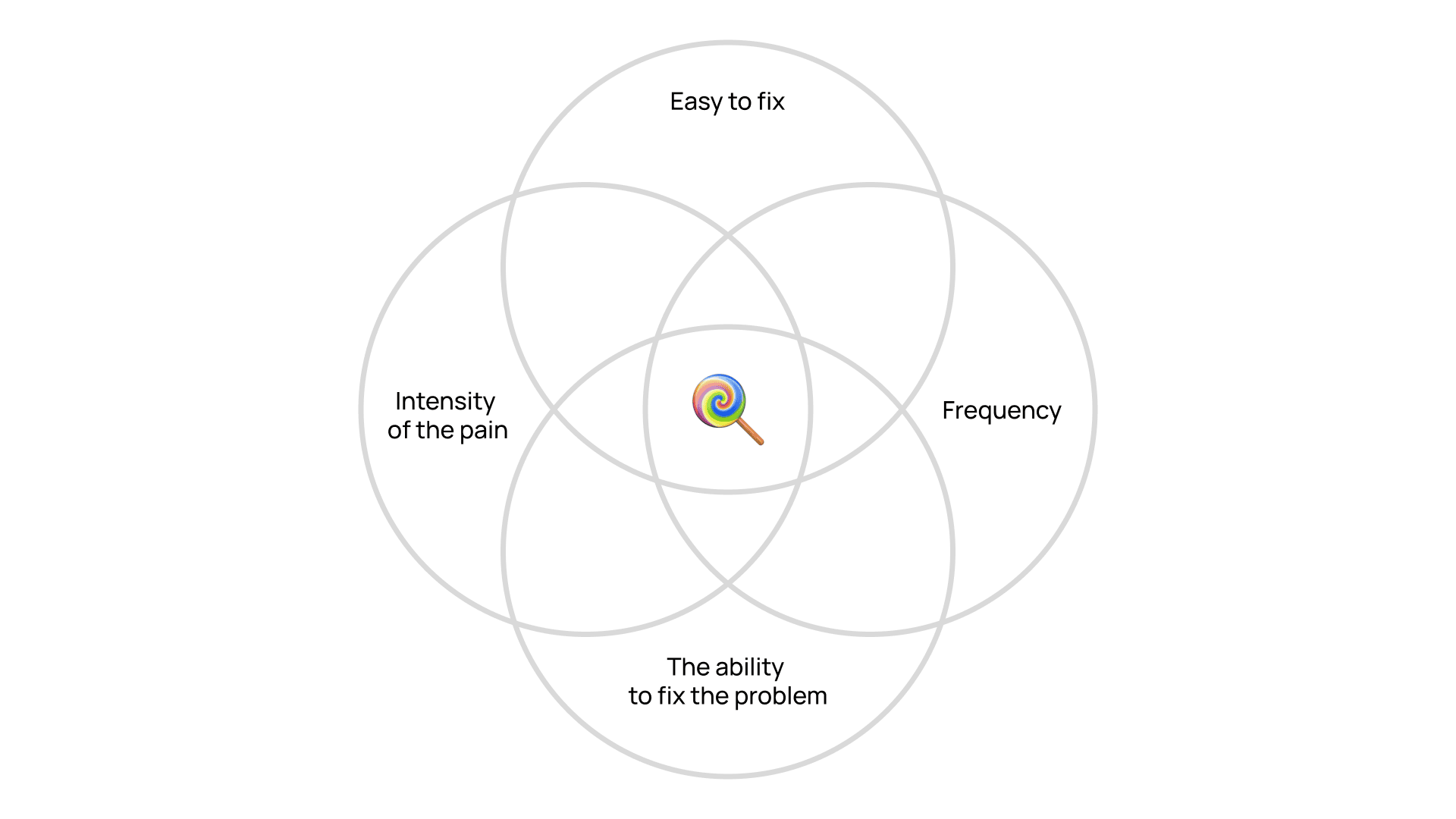
Understanding
After selecting my target audience, I aimed to gain a deeper understanding of this customer segment, clearly define their pain points, and assess the current market landscape.
To achieve this, I conducted a three-week qualitative sprint, which included:
- Interviews with 30 customers and cleaning professionals to uncover key frustrations and needs.
- Competitor analysis to identify gaps and opportunities in existing solutions.
- Online research to develop a broader understanding of industry trends and market dynamics.
This comprehensive approach helped me validate assumptions, refine the problem statement, and ensure that the solution was both relevant and competitive.
Key Insights from Customer and Cleaning Staff Interviews
After conducting interviews with both customers and cleaning staff, and browsing online comments, I uncovered the following key insights:
Customer Pain Points
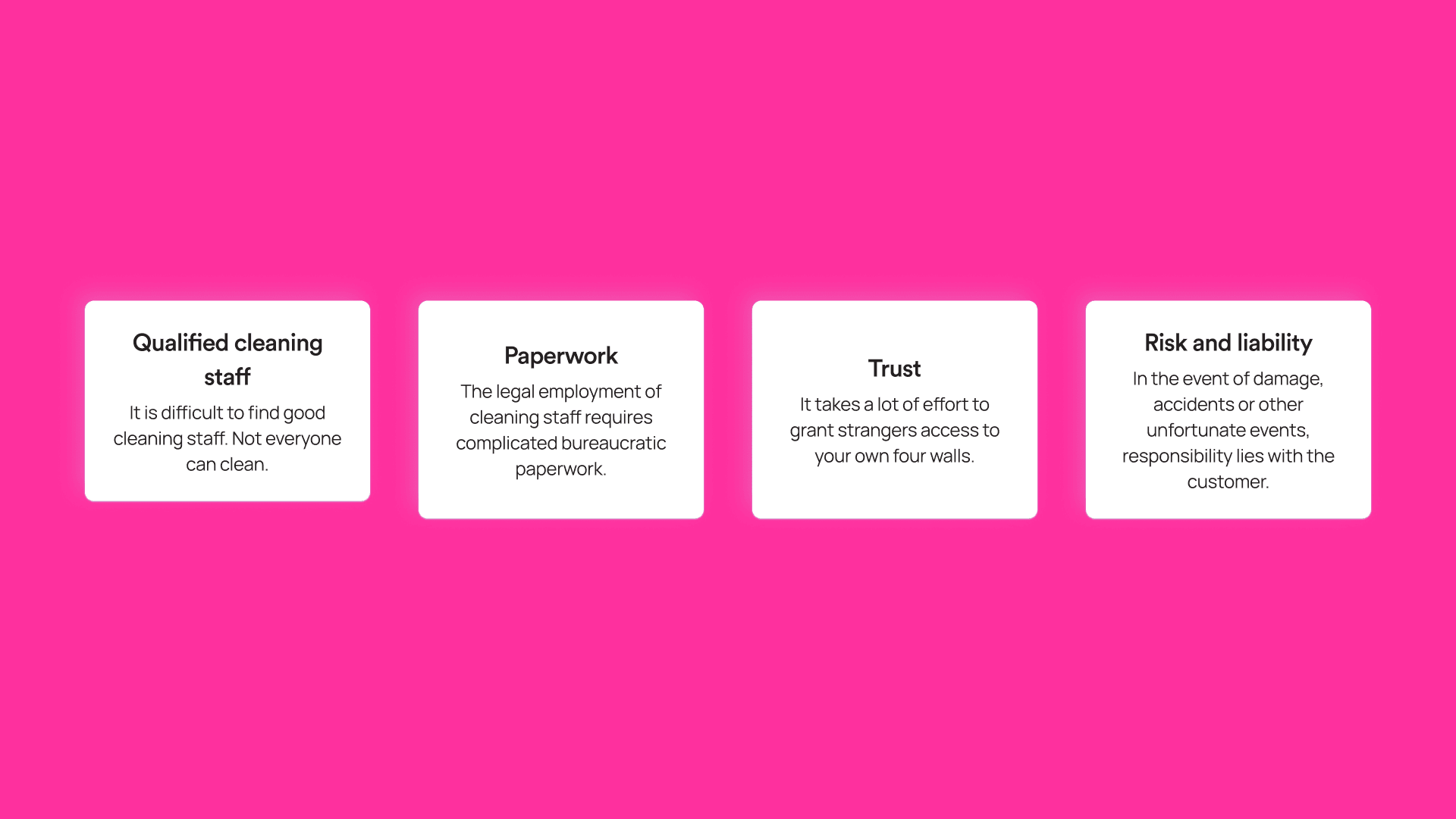
- Finding reliable cleaning staff is difficult. Many competitors have attempted an Uber-style model, assuming that if someone can hold a broom, they can clean professionally. However, cleaning requires skill, and not everyone meets the expected standards.
- Hiring cleaners legally as a private individual is bureaucratically complex. The legal employment process involves complicated paperwork. Many customers either struggle to navigate the bureaucracy or unknowingly engage in illegal employment due to unclear regulations.
- Trust is a major barrier. Allowing a stranger into one’s home requires a high level of trust. Customers are hesitant to hire someone unless they feel assured of their reliability and professionalism.
- Customers bear full liability in case of damage or accidents. In most cases, responsibility for damages, injuries, or other incidents falls entirely on the customer. Many are unwilling to take on the risk and liability, making them hesitant to hire independently.
Cleaning Staff Pain Points

- Unstable and scattered work schedules. Most cleaning companies provide cleaners with few working hours spread across multiple locations. Cleaners prefer fewer, larger jobs as it helps them plan their daily routines more efficiently.
- Limited access to transportation. Many cleaners do not own cars or public transport subscriptions. As a result, they prefer jobs close to home to minimize commute times and costs.
- Need for stability and reasonable hours. Cleaners prefer consistent, predictable work schedules that allow them to build routine and stability in their private lives. Jobs with regular hours, especially those that align with family responsibilities, are significantly more attractive.
Competitors
To determine the optimal positioning of our service while addressing key customer pain points, we conducted a market analysis to evaluate how major competitors align with our target customers' concerns. Specifically, we examined industry leaders such as Book a Tiger, Homeservice24, and Batmaid to understand their positioning relative to our core value proposition.
For this purpose, I used a product matrix with two key dimensions:
- The Y-axis: Responsibility
- Top: The service provider assumes most or all responsibility for hiring, vetting, insuring and managing cleaners. Customers simply book a service and receive a fully managed experience.
- Bottom: The customer takes on more responsibility, such as selecting, hiring, and sometimes even managing cleaners independently. The platform may act as a marketplace rather than a full-service provider.
- The X-axis: Cleaner Quality
- Right: Cleaners are professional, trained, vetted, and skilled. The service guarantees a high standard of cleaning quality.
- Left: Cleaners are casual, untrained, and unverified, often working informally or part-time, which can result in varied service quality.
The Four Quadrants Explained
-
Top Right – Fully Managed Professional Cleaning: The most premium offering, where a service provider fully manages the cleaning process, from vetting and training cleaners to scheduling and quality assurance.Customers receive a hassle-free, high-quality cleaning service.
- Example Competitor Batmaid: Although Batmaid managed the entire process—including vetting, training, and oversight, customers ultimately had to sign a contract with the cleaner, entering an employer-employee relationship. This means they still bear a certain level of responsibility despite the service’s managed approach.
-
Top Left – Fully Managed Casual Cleaning: The service provider still manages the process, but the cleaners are unverified or lack professional training. Customers benefit from convenience, but cleaning quality may be inconsistent.
-
Bottom Right – Customer-Sourced Professional Cleaning: Customers have access to professional, vetted cleaners, but they must take responsibility for hiring and managing them directly. Platforms in this category often serve as a marketplace, connecting customers with qualified professionals.
- Example Competitor Homeservice24: Homeservice24 operates as a marketplace where cleaners can create profiles and have them verified. They can also upload qualifications, references, and other credentials to improve their chances of getting booked. However, cleaners and customers are responsible for managing arrangements independently. To support legal employment, Homeservice24 offers Fairboss.ch, an online tool that guides customers through the legal hiring process step by step.
-
Bottom Left – Customer-Sourced Casual Cleaning: The most informal model, where customers hire casual, untrained cleaners directly with little to no oversight from a service provider. This is typically the lowest-cost option but comes with higher variability in service quality.
- Example Competitor Book a Tiger: Book a Tiger, while operating as a marketplace, followed an Uber-style model. They vetted cleaners primarily for security purposes, such as checking for a criminal record, but did not rigorously assess their professional experience or cleaning skills. Customers also had no opportunity to verify a cleaner’s qualifications. The platform functioned under the assumption that just as anyone who can drive a car can potentially be a taxi driver, anyone who can hold a broom can potentially be a cleaner.
After evaluating this landscape, we aimed to position our service in the upper-right quadrant, offering a fully managed experience with professionally trained and vetted cleaners to differentiate ourselves in the market.
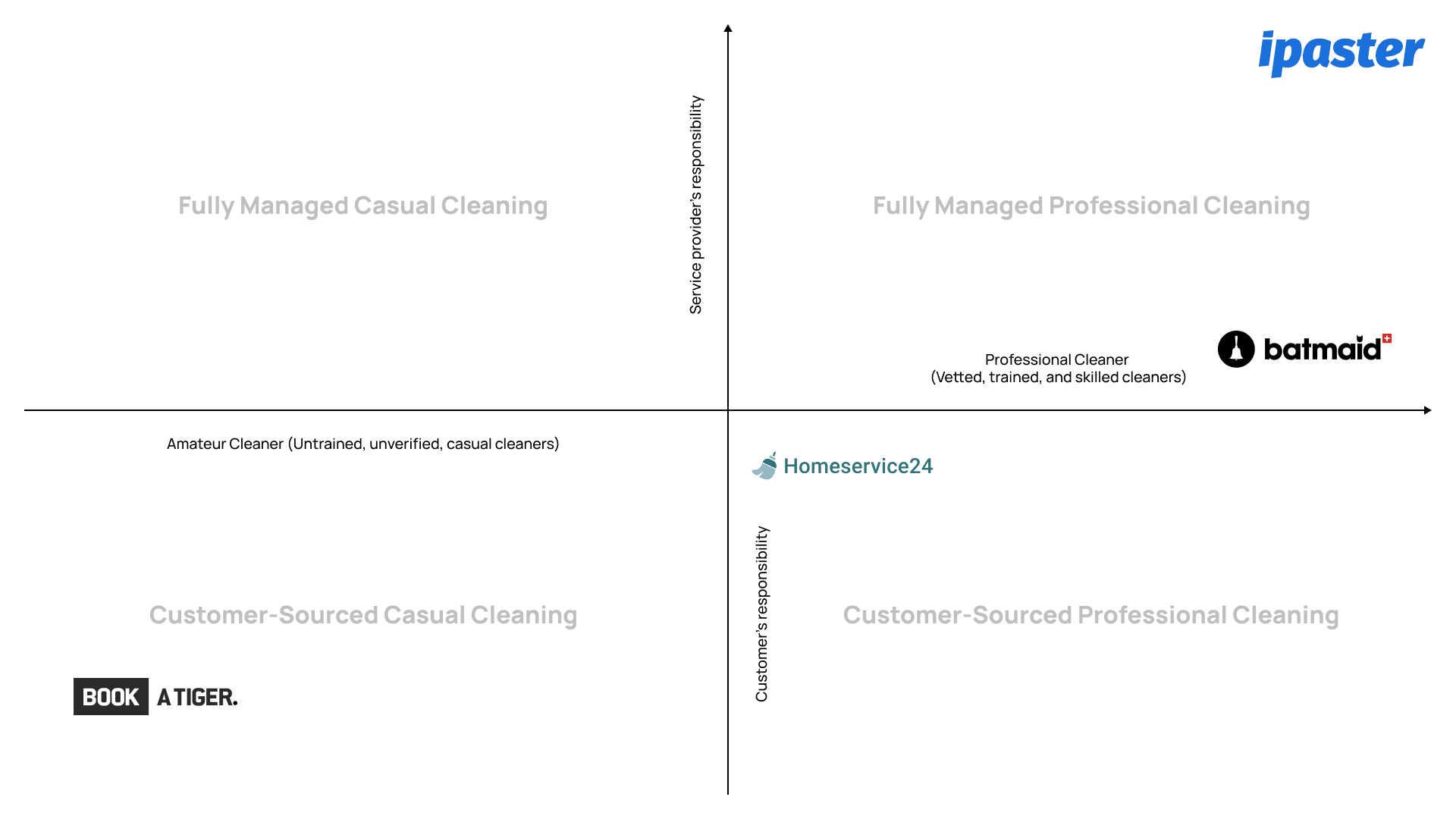
Building the Solution
At this point, we had a clear understanding of the market, our potential customers, and the cleaning staff. As a bootstrapped startup, our final challenge was to design a service that met our target customers' demands while maximizing our limited resources. Unlike most of our competitors, CM Reinigungen began as a traditional company with established processes for screening, hiring, and training cleaning professionals. We chose to build on this strength by taking full ownership and responsibility for every step of the process, ensuring that our services were comprehensive and reliable. Consequently, we continued to maintain our rigorous standards while extending our offerings to include B2C customers.
Solving by Pain Points
Qualified Cleaning Staff
One of the main challenges our customers faced was finding reliable cleaning professionals. By managing the screening, hiring, and training processes ourselves, customers who booked with us did not have to worry about the quality of the cleaners, since we had already ensured they met our high standards.
Paperwork
Another significant pain point was that customers were forced to become employers. This meant they had to handle valid contracts, register for social insurance and occupational accident and health insurance, issue payslips and wage statements, and manage other administrative requirements mandated by law. In our case, since our company already took care of these responsibilities, we only needed to provide our professionals to private customers. We remained the employer while our customers enjoyed the service, eliminating the burden of paperwork for them.
Trust
While our customers sought reliable professionals, a significant challenge was establishing trust. It is not easy to welcome random strangers found on the internet into your home, one of the most intimate spaces of your life. We understood that trust is multi-faceted and considered several key factors:
- Continuity: Some competitors, such as Book a Tiger, use an Uber-like model where a different cleaner is assigned each time. Their systems allocate the best available cleaner to maximize revenue and service coverage. However, having a different cleaner at every appointment prevents the development of a lasting relationship. This means trust must be rebuilt from scratch at each visit. In interviews, several customers mentioned canceling services because they could not establish a reliable, personal connection with a cleaner.
- Cleaner's needs: Our professionals prefer having a stable schedule with a few consistent clients, as it allows for regular working hours and a better work-life balance. This consistency not only benefits them personally but also enables them to deliver a more tailored and dependable service.
Based on these insights, we decided to provide customers with a cleaner they could build trust with over time. Our approach was to assign the same cleaner to every work assignment. Recognizing that there could be instances where a cleaner might be unavailable due to sickness, vacation, or other reasons, we introduced a contingency plan: for the first two cleaning sessions, two cleaners would attend. From the third session onward, the primary cleaner would work alone. These initial joint sessions allowed the customer to establish rapport with a backup cleaner, ensuring a smooth transition if the primary cleaner became unavailable.
Furthermore, we aimed to reduce any mental barriers associated with booking our services. We removed the requirement to enter credit card details or similar payment information upfront. Customers could book, experience the service, and only then receive an invoice if they were satisfied. Lastly, we implemented a friends-refer-friends system, offering discounts on booked services. After all, there is no more trusted source than friends and family who have experienced the service firsthand. This strategy proved highly effective, with 95% of our growth—reaching almost half of Switzerland, coming solely through word of mouth.
Risk and Liability
The final major pain point was that customers had to assume full responsibility for any damages, injuries, or incidents. We addressed this issue by acting as both the employer and the service provider, which placed all liability on us. This arrangement allowed customers to enjoy the service without worrying about potential problems.
Bringing it all together
We set out to develop a digital platform that made accessing our services effortless. Our goal was to create a website where visitors could easily explore our solutions and book appointments, while technology improved our internal coordination and support. Based on our research, we initially concentrated on maintenance cleaning, serving both our established business clientele and a new segment of private clients.
To bring this vision to life, we carefully mapped out each stage, from initial booking to the completion of a cleaning service. This process helped us identify and refine the most critical elements of our offering throughout the customer journey, ensuring a seamless experience for both our customers and our team.
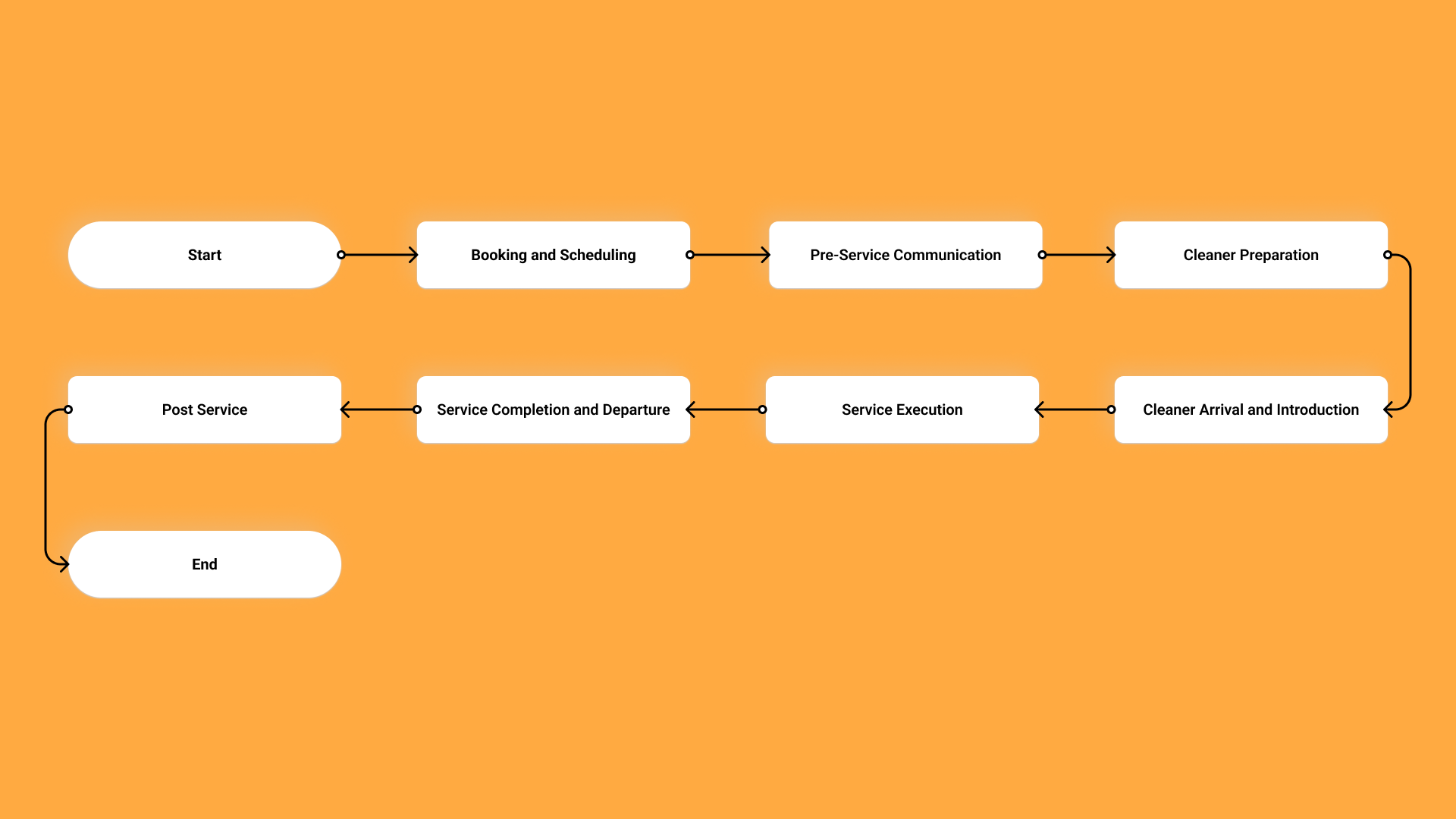
Phase 1: Booking Scheduling
-
Customer Booking: The customer visits the website and enters her ZIP code. If our service is unavailable in her area, we display a message informing her and offer the option to sign up for notifications when the service becomes available.
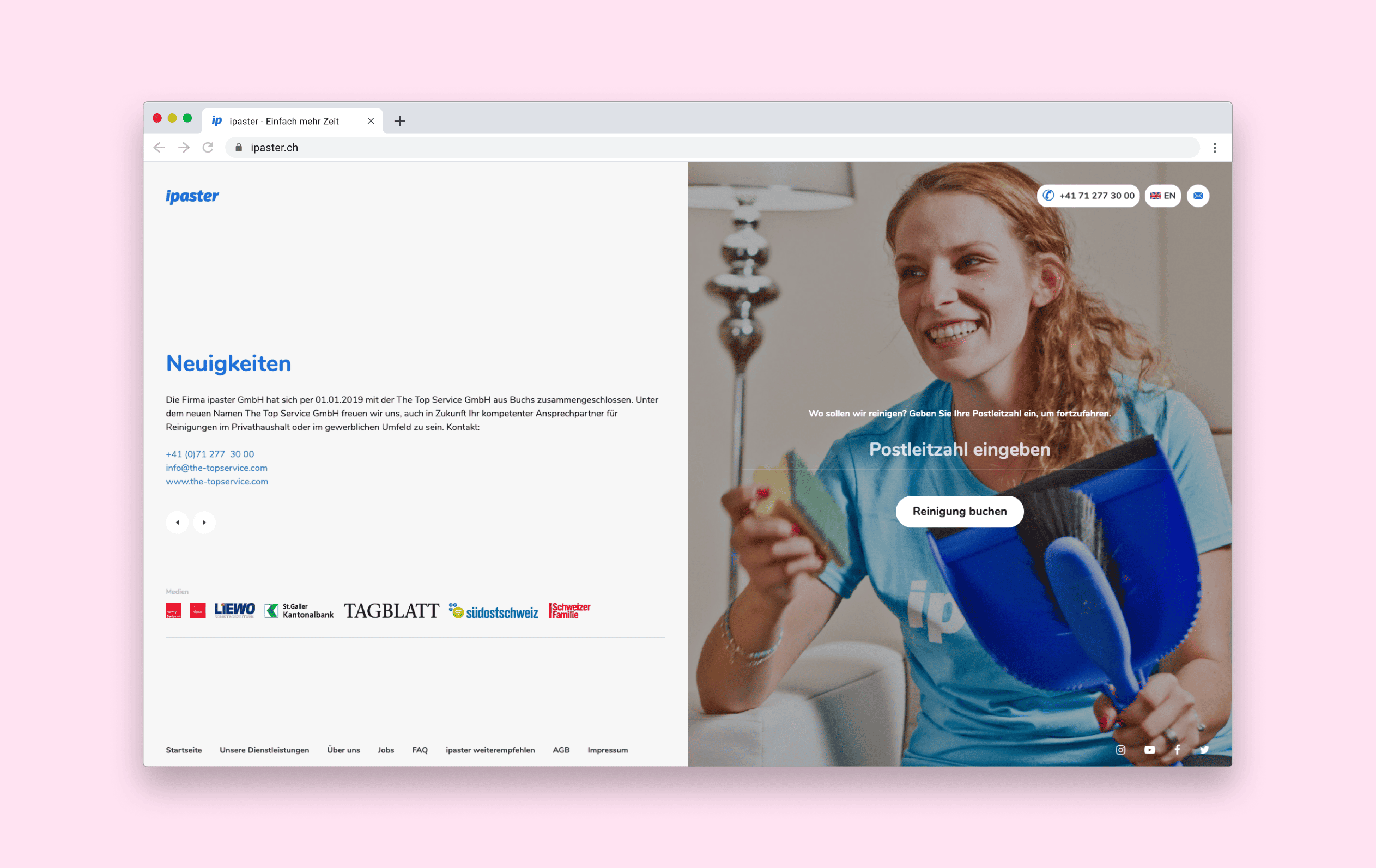 If the location is supported, she proceeds to select the number of cleaning hours, days (e.g. Monday and Wednesday), choose a frequency (weekly or biweekly), and schedule the date and time of the first cleaning appointment.
If the location is supported, she proceeds to select the number of cleaning hours, days (e.g. Monday and Wednesday), choose a frequency (weekly or biweekly), and schedule the date and time of the first cleaning appointment. 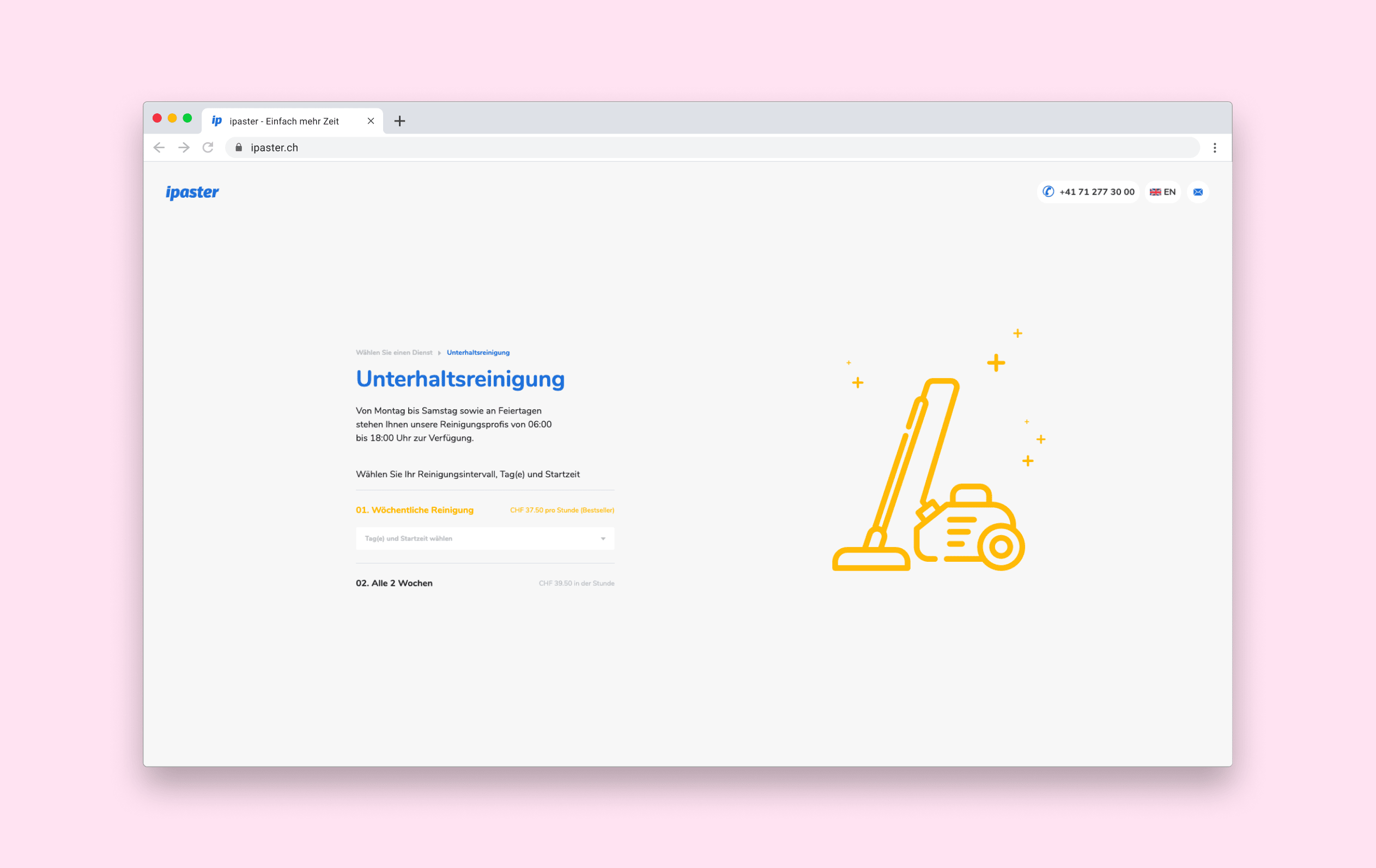
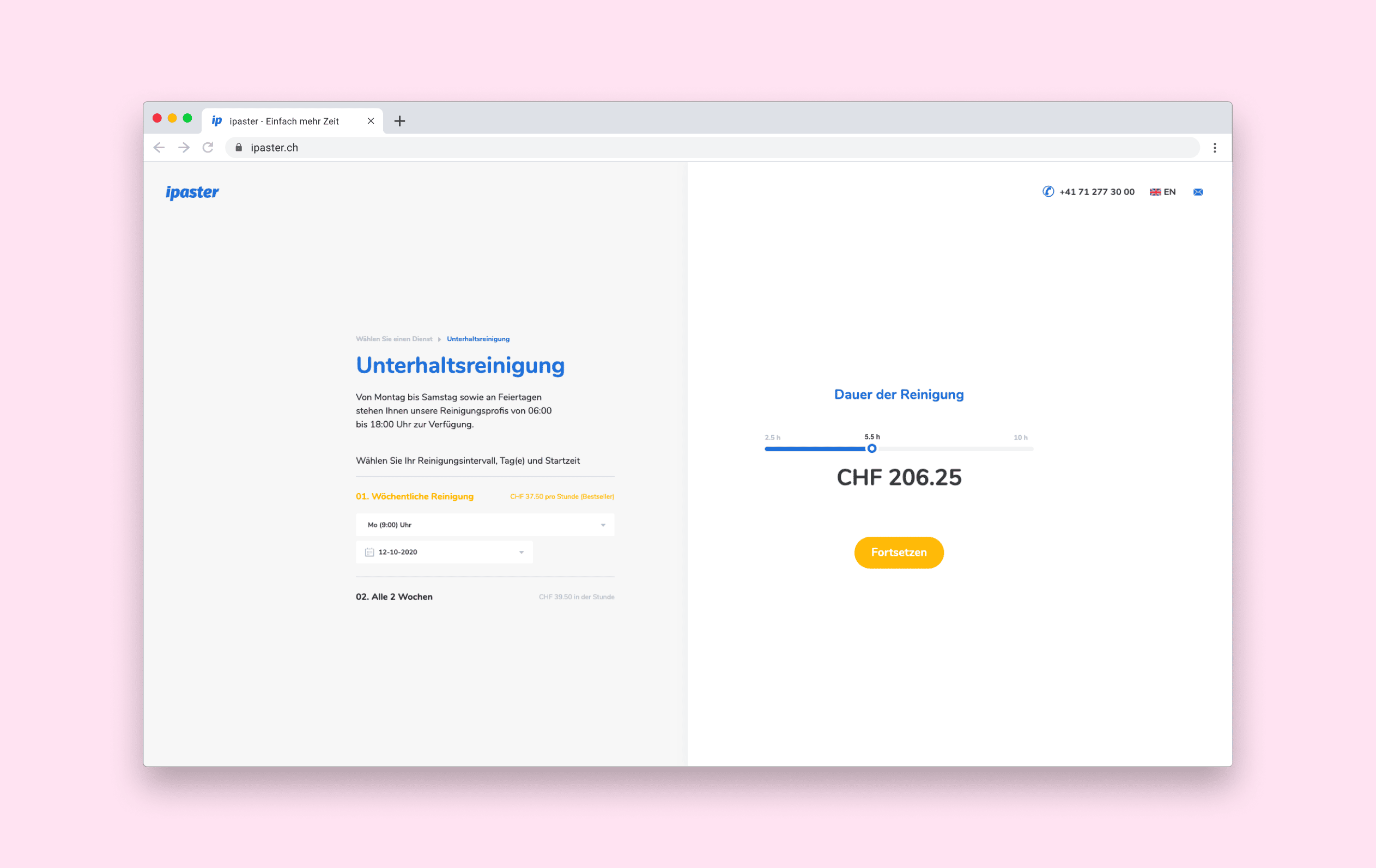

-
Assignment of Cleaning Staff: Upon receiving a customer booking, staff assignment should be handled fairly and efficiently. Based on previous feedback, we learned that most cleaners do not have cars or a budget for long commutes. Therefore, for each customer request, we should only consider staff within a reasonable commuting radius.
To ensure fairness, we send SMS notifications to all available cleaners in the vicinity. The first cleaner to respond secures the assignment, while the second responder is designated as a backup in case the primary cleaner is unavailable.
Phase 2: Pre-Service Communication
If no staff members are available, we inform the customer and offer the option to hire and train a cleaner specifically for their needs.
If a cleaner is successfully assigned, we send the customer a reminder about the upcoming cleaning, along with details about the assigned cleaner (and backup cleaner, if applicable).
Regarding equipment and cleaning supplies, our research showed that it is common practice for private customers to provide their own. This allows cleaners to arrive empty-handed. However, we couldn’t rely on customers to always have the necessary supplies readily available. To ensure a smooth experience, we send first-time customers a checklist of essential equipment and cleaning agents they should have on-site to guarantee a high-quality service.
Phase 3 & 4: Cleaner Preparation and Cleaner Arrival
Before cleaners visit customers, we provide them with Ipaster-branded workwear to establish brand recognition and build trust upon arrival. A strong, professional appearance reassures customers and reinforces our credibility.
To ensure a positive first impression and foster trust from the start, we also developed a staff conduct guideline outlining best practices when meeting customers. This included:
- Warm and Professional Greeting – Cleaners should smile and greet the customer in a friendly, polite manner to set a welcoming tone.
- Identity Verification – Upon arrival, cleaners must present their ID and introduce themselves, as customers have already received their details via email.
- Respect for the Customer’s Space – Staff should remove shoes before entering and be mindful of personal belongings and ask about any specific household rules.
- Clarifying Expectations – If necessary, they should confirm cleaning priorities with the customer before starting.
- Expressing Appreciation – A simple ‘thank you’ at the end of the service reinforces a positive experience and encourages repeat bookings.
Phase 5: Service Execution
On the day of the appointment, the assigned cleaner arrives at the customer’s location. The cleaner introduces themselves, confirms the service details, and discusses any specific instructions provided by the customer.
Phase 6: Service Execution
The cleaner performs the cleaning service as per the agreed scope. During the service, the customer can communicate any immediate concerns or requests, ensuring that the service meets their expectations.
Phase 7: Service Completion and Departure
Once the cleaning is finished, the cleaner reviews the work with the customer if necessary, ensuring satisfaction. Afterward, the cleaner leaves the premises, marking the end of the service session.
Phase 8: Post Service
After the cleaner completes the service and departs, the post-service phase begins to ensure customer satisfaction and continuous improvement. During this phase, we:
-
Gather Feedback: Reach out via email or SMS with a brief survey asking the customer to rate their satisfaction with the service, comment on the cleaner’s performance, and share any suggestions for improvement.
-
Resolve Issues: Provide a channel for customers to report any concerns or issues that may have arisen during the service. Our support team is available to address problems promptly, ensuring any negative experiences are resolved quickly.
Defining Our Goals & Measuring Success
From the outset, our primary objective was to establish a solid customer base and generate sustainable revenue growth. Specifically, our goal was to acquire at least 20 new private customers and achieve a minimum revenue of CHF 50,000 by the end of 2015. To track our progress and ensure we were on the right path, we identified three key success metrics:
- Monthly Recurring Revenue (MRR) – As a service-based business, MRR was a critical indicator of financial stability and long-term viability. We aimed not only to secure new customers but also to ensure they returned for recurring cleanings, contributing to steady revenue growth.
- Conversion Rate on the Website – Given that our customer journey began online, the efficiency of our website in converting visitors into paying customers was a vital measure of our marketing effectiveness. We closely monitored user behavior, optimized our booking flow, and refined our messaging to maximize conversions.
- Retention Rate – Acquiring customers was only part of the equation; retaining them was just as crucial. A high retention rate meant satisfied customers, stronger brand loyalty, and reduced reliance on constant new customer acquisition. By delivering consistent quality and a seamless experience, we aimed to turn one-time users into long-term clients.
Go-to-Market Strategy
Our go-to-market strategy was straightforward yet effective, leveraging existing relationships and strategic media engagement to drive initial traction.
Leveraging Existing B2B Relationships
We already had a potential customer base within our B2B network—managers and leaders from our corporate clients, some of whom had already expressed interest in a service as the one were building. These individuals became our first private customers, and because they trusted us through their companies, they also played a key role in word-of-mouth referrals, bringing in additional customers organically. This warm introduction to the market allowed us to establish credibility quickly and gain initial traction with minimal acquisition costs.
Generating Media Buzz
To ensure strong visibility upon launch, we engaged with regional media outlets ahead of time, securing coverage in various publications to create anticipation and brand awareness. This proactive approach resulted in features from notable outlets such as Schweizer Familie, Newly Swissed, Mamalicious, and others. These media placements provided valuable exposure, reinforcing our credibility and positioning us as a trusted player in the industry from day one.
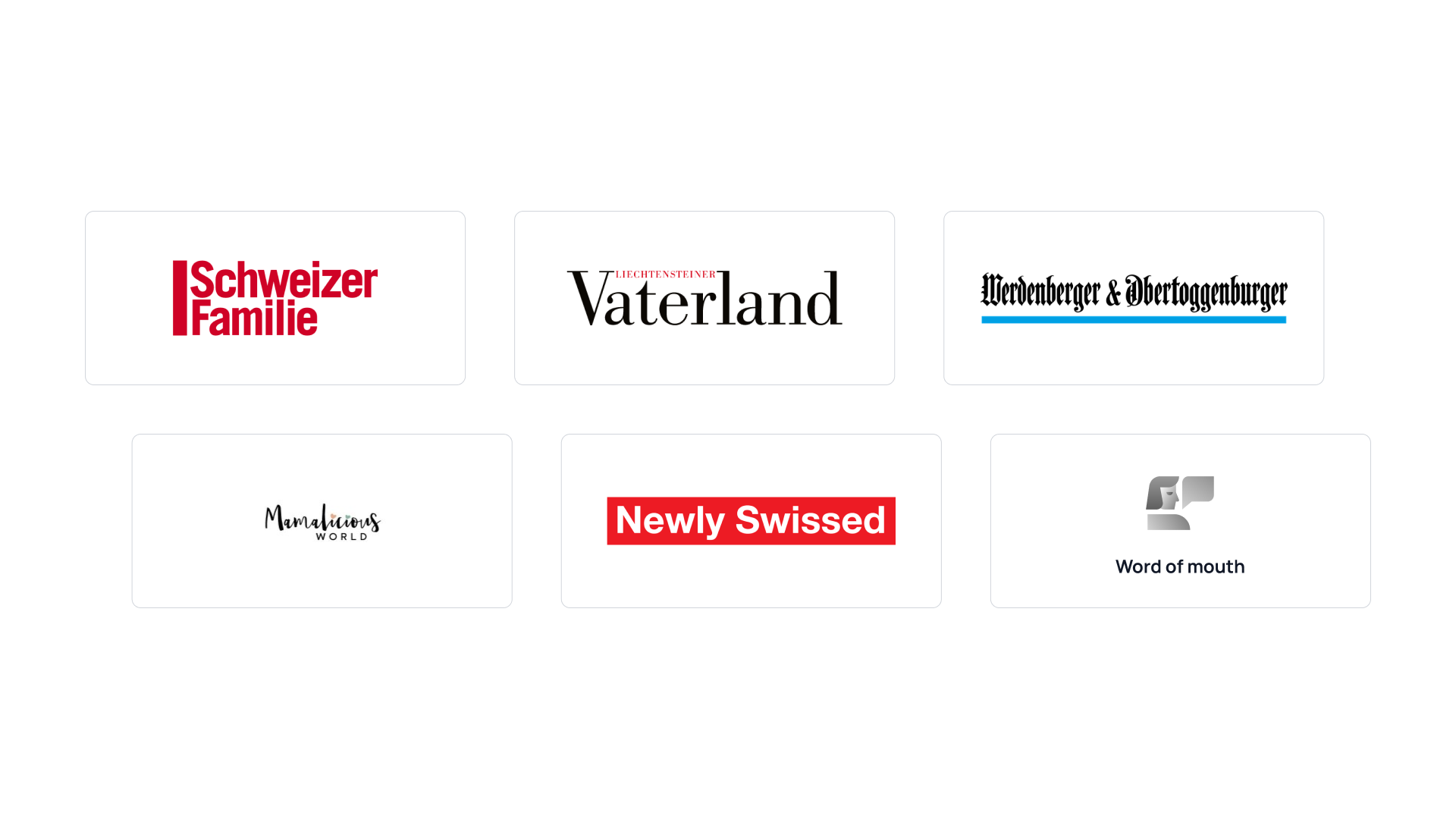
Results - From Launch to Acquisition
In June 2015, we began developing the new website and laying the groundwork for our launch. After months of preparation, we were finally ready, and in September 2015, we officially launched ipaster.ch.

Despite facing challenges along the way, we not only met but exceeded our goals:
- By the end of 2015, we had acquired over 30 customers, surpassing our initial target.
- In 2015, we generated CHF 90,000 in revenue, significantly exceeding expectations.
- In 2016, we were recognized as one of the top 5 startups in Eastern Switzerland by Startfeld Diamant, a testament to our rapid growth and impact.
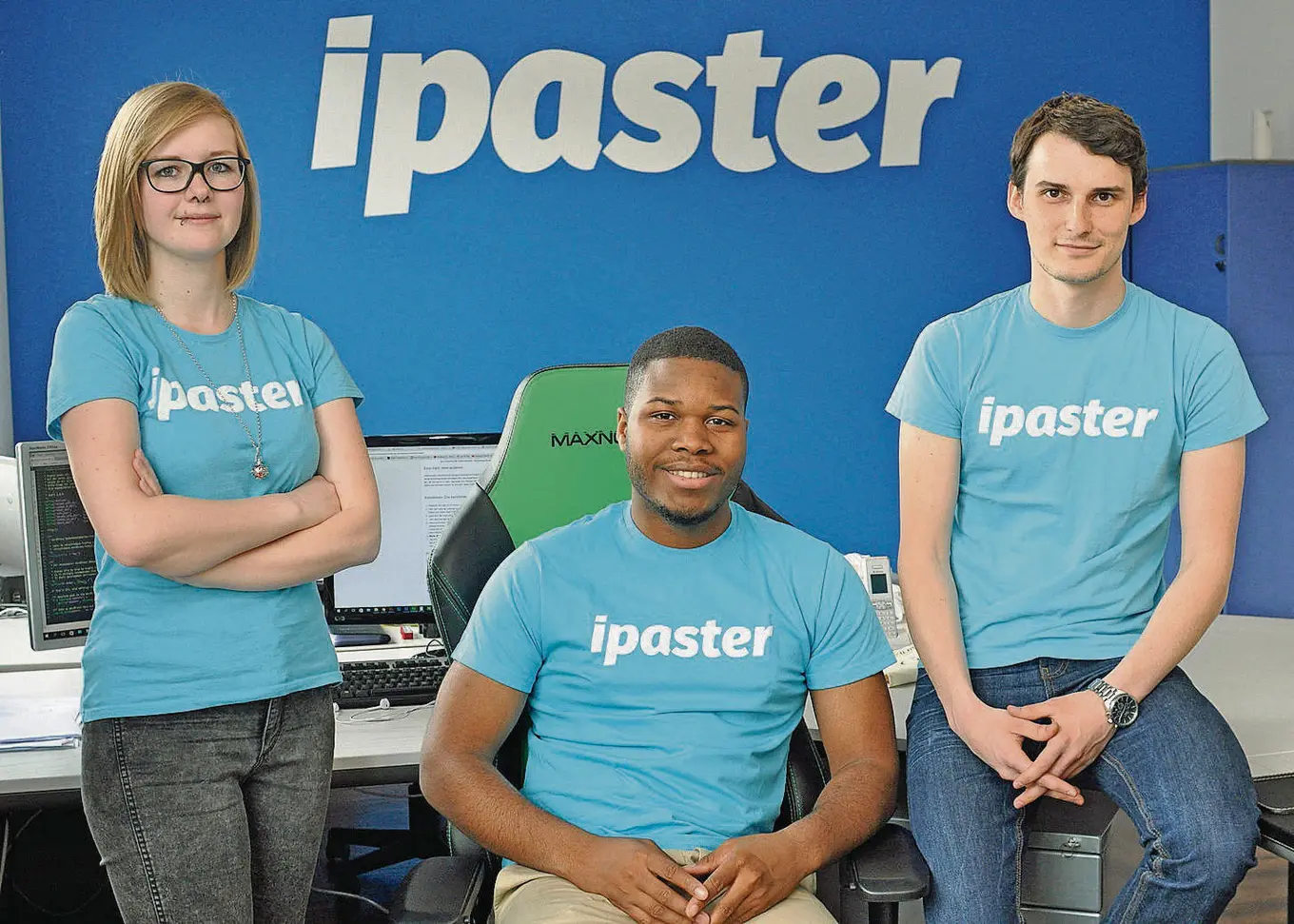
- in 2017 we reached a revenue of CHF 1.000.000,00
- In 2018 we got acquired by one of the biggest cleaning companies in the region, The Top Service AG
- In 2019 the acquisition process was over and ipaster was fully integrated into The Top Service AG

